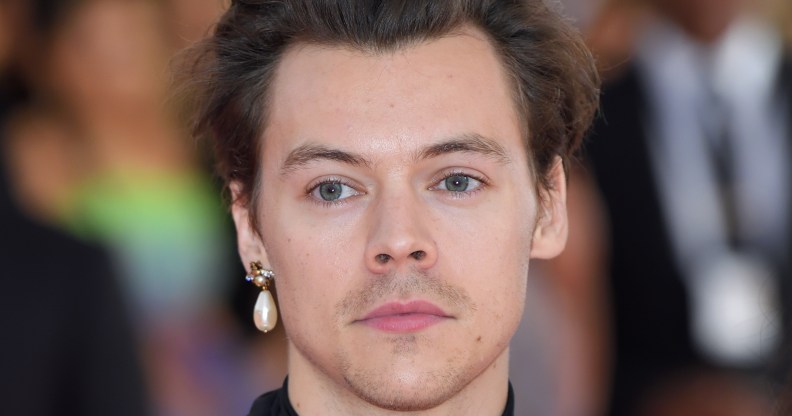The New York Times writes entire article about how dangly earrings for men are ‘well suited for our non-binary gender moment’

Harry Styles arrives for the 2019 Met Gala. (Karwai Tang/Getty)
Have you ever wondered how to express your “soft but not fragile” masculinity in a way that is “well suited for our non-binary gender moment”?
Not to fear, the New York Times has found the accessory for you and it’s officially “in”.
The dangly earring (singular) is, according to journalist Max Berlinger, “hanging from men’s lobes everywhere”.
If you don’t want your own lobes to be left out of the “frenzy”, you must join the ranks of Harry Styles, Lil Nas X and Odell Beckham Jr in adorning them with this “fashion flourish”.
The rules are simple – your single earring must “sway”, “glisten” and “frame your face”.
Nick Paget, the senior menswear editor at the fashion forecasting firm WSGN, told the publication that the magical accessory might even influence your views on gender and sexuality.
Paget said: “We’ve been talking for a couple of seasons about a different kind of masculinity — soft but not fragile.
“It’s for men who aren’t afraid of experimenting with their look and will probably have enlightened views on gender roles, or at least be comfortable enough with their own sexuality.”
Apparently catching on to the powers of the singular dangly, Berlinger reports: “Fashion designers have been quick to co-opt the trend, perhaps sensing that men’s dangly earrings are well suited for our non-binary gender moment.”
Dangly earrings have apparently been dubbed by GQ as “the roller skates of ear jewellery”, and in contrast to all the other functional and useful earrings out there, are “totally without practical use and extremely fun”.
Once your glistening, swaying lobe decoration has been installed, be sure not to keep it to yourself.
According to the article: “It’s likely no coincidence, too, that these earrings have proliferated as social media platforms like Instagram have put focus on the face.
“The dangly earring is a fashion flourish that invites social media sharing.”

